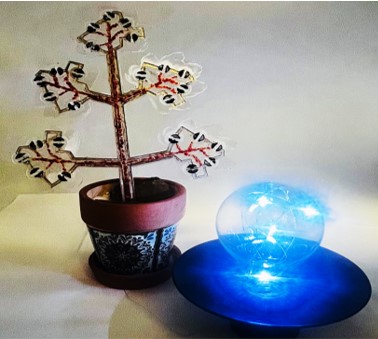|
Carbon Capture Techniques

|
Carbon
dioxide (CO2) concentrations are often much greater indoors than outdoors, a
significant health problem in urban areas, where people spend more than 80
percent of their time inside residences, offices, and other buildings.
Traditional CO2 mitigation techniques are becoming impractical as outdoor CO2
levels rise with global warming. This study shows in meticulous detail how
innovative cyanobacterial artificial plants designed for enhanced indoor carbon
capture and the direct use of captured CO2 to produce oxygen (O2) and enough
bioelectricity to power portable electronics. The artificial plants use indoor
light to stimulate cyanobacterial photosynthesis, effectively reducing indoor
CO2 from 5000 ppm to 500 ppm—a reduction rate of 90%, significantly greater
than the ~10% observed from natural plants alone. Concurrently, the system
produces O2 and bioelectricity, offering an energy-efficient way to use
captured CO2. Each artificial leaf contains five biological solar cells that
generate electricity during photosynthesis. Water and nutrients are delivered
to each cell through transpiration and capillary action, mimicking natural
plant systems. The artificial plant produces an open circuit voltage of 2.7V
and a maximum power of 140 µW, sufficient to power portable electronics. The
approach presents a decentralized system for enhancing indoor air quality and
generating electricity, providing a sustainable solution to indoor
environmental challenges in the context of rising global CO2 levels.
|

